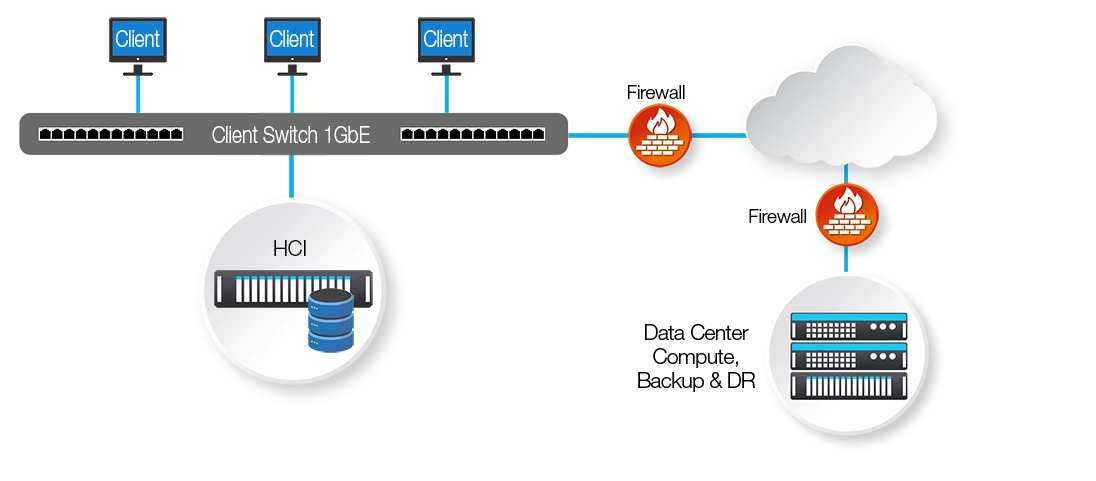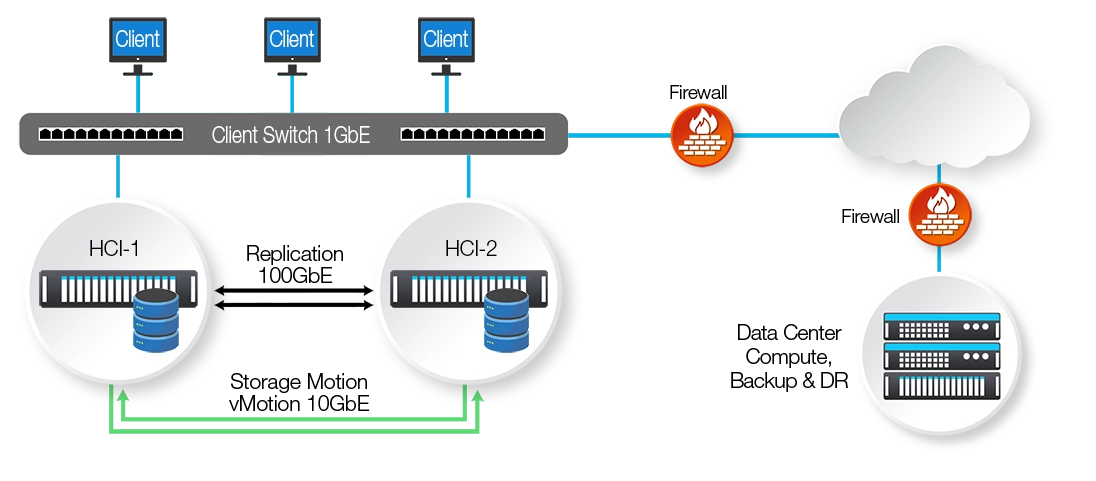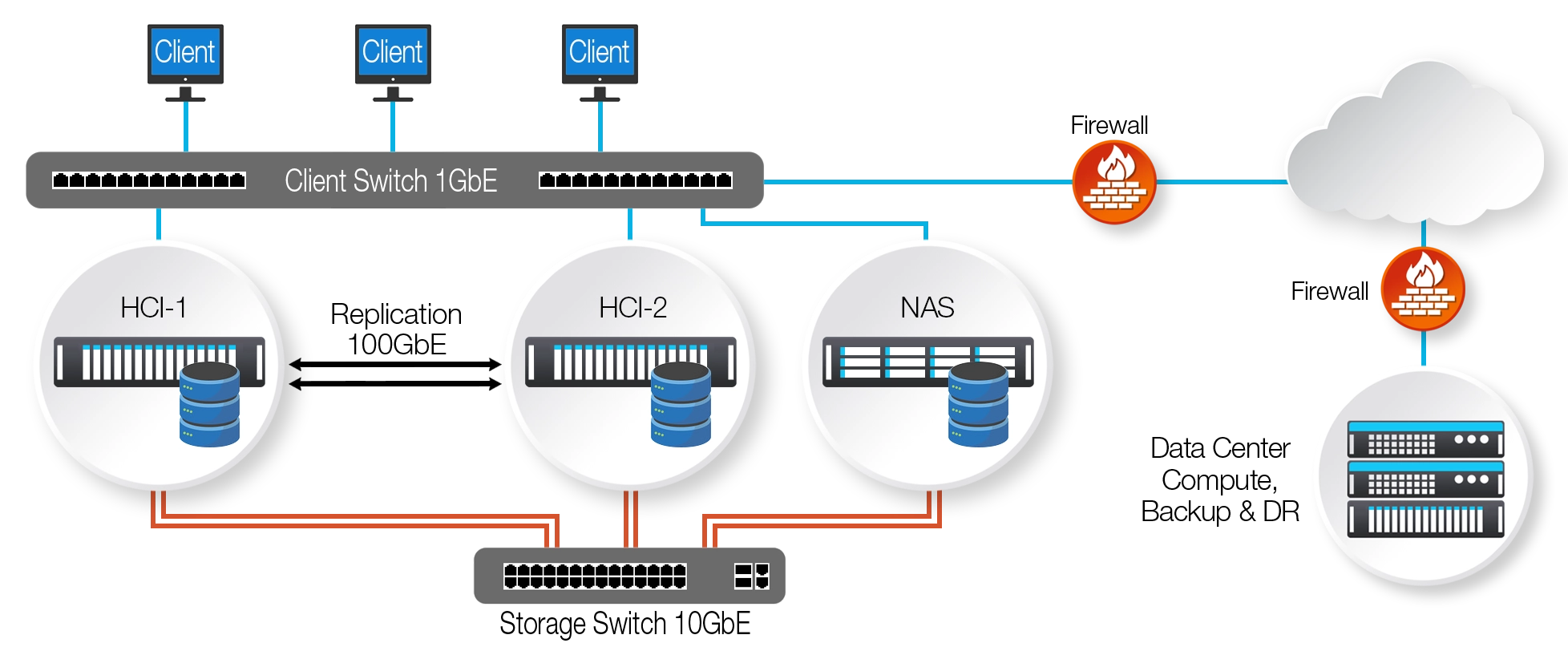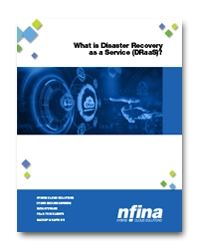Demystifying DRaaS: Your Comprehensive Guide
Published: December 19, 2022
By Gene Everette

What is Disaster Recovery as a Service (DRaaS)?
Disaster recovery is the process and methodology by which a company regains access to its IT infrastructure after a disaster. Disasters can be caused naturally (i.e. Earthquake, Wind, Fire, etc.), or by equipment failure (storage drive failure, server failure, power outage, internet outage, etc.) or by Cyber terrorism (disgruntled employee, Malware, Ransomware, etc.). Whatever the cause, the result is the same: the IT infrastructure goes down, it must be mitigated and recovered to maintain business continuity.
Show More
Due to recent advances in immutable snapshot technology, companies that provide Infrastructure as a Service (IaaS) can also now provide DRAAS solutions as an affordable option for mid-market Enterprise. Nfina’s implementation of DR successfully implements the recovery portion of the NIST Cyber-Security Standard. This significantly reduces recovery time objectives (RTOs) and ensures that the business can resume operations within minutes rather than hours or days.
One of the main benefits of DRaaS is its flexibility. Unlike traditional disaster recovery solutions that require costly infrastructure investments and complex setups, DRaaS solutions eliminate these requirements by leveraging cloud computing technology. This means that businesses no longer must worry about managing physical hardware or maintaining backup servers at off-site locations. Instead, they can simply pay for the services they need based on their specific requirements.
DRaaS also eliminates the risk associated with managing complex disaster recovery processes internally. The responsibility falls on the DRaaS provider who has expertise in handling disaster recovery situations effectively. They use advanced technologies like continuous data protection (CDP), virtualization techniques like hypervisors or containers along with automated failover procedures to ensure minimal disruptions during a disaster.
How is DRaaS Implemented?
One of the main reasons why DRaaS has become increasingly important in today’s digital age is due to the rise of cyber threats. With hackers becoming more sophisticated and targeted in their attacks, no business is immune from potential cyber-attacks. In fact, according to IBM’s 2021 Cost of a Data Breach Report, the average cost of a data breach for companies worldwide was $4.24 million – an increase of nearly 10% since 2019.
Show More
Disaster recovery as a service relies upon the geographic redundant replication of data far enough away from the primary site so as not to be affected by the disaster. In most instances, 600-1000 miles away is often recommended as a best practice for this purpose. When the infrastructure goes down (for whatever the reason), the business needs to recover lost data from a second location where the data is backed up.
A backup is a very crude form of disaster recovery, but its RPO (Recovery Point Objective) is usually insufficient for most organizations to avoid financial losses. This is because the typical backup schemes are very compute and I/O intensive and can only be run daily (typically after hours) and will result in subsequent data loss (up to 24 hours) if restoration is necessary.
For a disaster recovery process to work efficiently and minimize data loss, the system should be designed to duplicate compute and storage resources and keep them synchronized with an active-active replication scheme to minimize downtime. This active-active scheme must also be reversable to maintain maximum protection while running out of the DR site.
Key Features and Components of a DRaaS Solution
1. Real-Time Replication: One of the main features of DRaaS is real-time replication, which ensures that all changes made to your data are automatically backed up in real-time. This means that even if your primary system goes down, you will have access to the most recent versions of your data.
Show More
2. Automated Failover: In case of an outage or disaster scenario, DRaaS solutions offer automated failover capabilities that allow for seamless transition to backup systems without any disruption to business operations. This ensures minimal downtime and maximum uptime for your business.
3. Flexible Recovery Options: DRaaS providers offer flexible recovery options depending on the specific needs of your business. These options include full system restores, file-level restores, or virtual machine snapshots.
4. Scalability: As your business grows, so does the amount of data you generate and store. A reliable DRaaS solution should be able to scale with your business needs without compromising on performance or security.
5. Testing and Monitoring: To ensure the effectiveness of your disaster recovery plan, regular testing and monitoring are essential. Most DRaaS providers offer automated testing and monitoring services to ensure that your systems are constantly backed up and ready for any disaster.
6. Multi-Platform Support: In today’s digital landscape, businesses often use a combination of on-premises and cloud-based systems. A good DRaaS solution should be able to support multi-platform environments to cover all aspects of your business.
Cost of Downtime
The average downtime that organizations are experiencing is on the rise. Recent reports show a 16x increase. Recent surveys show that 91% of the IT executives polled estimate the average downtime of the IT ecosystem to be $300,000/hr, and 44% of those surveyed say it’s over $1M/hr for their respective companies. Since downtime is so expensive to bottom line, doesn’t it make sense to go beyond the traditional once a day backup and work with a DRaaS provider?
A Comprehensive DRaaS Solution with Nfina
Typically, a group of highly qualified technical staff members at Nfina will meet with the client to explore the current IT Ecosystem and propose a Disaster Recovery solution. The data exchanged usually includes a copy of the results from running the application RVTools. RVTools is a Windows .NET application which uses VMware vSphere Management SDK and CIS REST API to display detailed information regarding the customers IT Ecosystem.
Once the information is obtained about the client’s compute and storage environment, an offsite active-active quote is formulated to implement the DRasS solution. The three reference architectures that are typically deployed are shown below:
Single Node Hyperconverged Edge with DR

2-Node Hyperconverged Edge with HA

2-Node Hyperconverged Edge with HA

Conclusion
DRaaS coupled with hyperconverged technology is now very affordable, and with the advent of immutable snapshots that originate from the storage array, high frequency RTO/RPO policies can now be implemented. This technology allows recovery of the IT infrastructure within minutes (not hours or days), thus minimizing data-loss and downtime for the enterprise.
With the ever-increasing risk of disasters and data loss, businesses cannot afford to neglect the importance of disaster recovery planning. DRaaS Providers offer a reliable and cost-effective solution that ensures business continuity in times of crisis. It provides continuous data protection, flexibility, scalability, faster recovery times, and expert management services. Therefore, every business must prioritize implementing DRaaS as part of their disaster recovery strategy in today’s digital age.

At Nfina, our Eco-Friendly Solutions make it easy for our customers to achieve a lower carbon footprint for your disaster recovery as a service and play a positive role in bringing about a sustainable future. We design technologies and products to help people understand their impact and actions better.
Nfina’s Hybrid Cloud and Hyperconverged solutions provide energy efficiency by using high-density, lower-power VMs enabling our customers to scale their digital transformations sustainably by optimizing space, reducing power consumption, and lowering cooling and maintenance costs. Nfina is taking a leadership role in doing what it takes to tackle climate change.
Nfina has been carbon neutral for our operations since opening in 2012.

